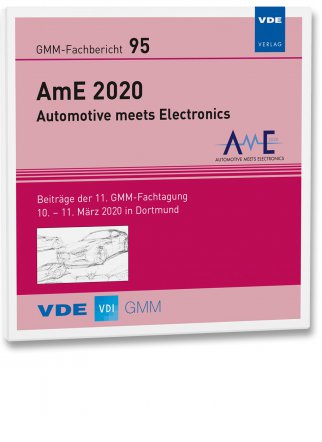VDE/VDI GMM (Hrsg.)
GMM-Fb. 95: AmE 2020
Automotive meets Electronics, Beiträge der 11. GMM-Fachtagung, 10. - 11. März 2020 in Dortmund
GMM-Fachberichte
2020, 160 Seiten, 140 x 124 mm, Slimlinebox, CD-Rom
ISBN 978-3-8007-5202-7, E-Book: ISBN 978-3-8007-5203-4
Persönliche VDE-Mitglieder erhalten auf diesen Titel
10% Rabatt
Technologies that have been discussed as projects for the future are now available in every new car, and progress toward autonomous driving is visible, although the future will still bring many challenges to master.
The AmE is the perfect place to discuss these challenges, both from the technical as well as the legal and societal side.
Sensors become more and more powerful which allows to get a better image of the car surroundings. Increasing computational power helps to fuse data from different sources such as RADAR, LIDAR, camera and ultrasound, enhanced and combined with information from Car-2-X communication and off-board services.
Nevertheless, there are plenty of unresolved issues.
On the hardware side, high computational power requires efficient chips, implemented in state-of-the-art technology, which is right now 7nm. New assembly technologies for vertically stacked dies as they are used in high-end GPUs, lead to very compact devices with a high power density. This implies forced cooling, a new concept with few experiences, in particular with respect to long term reliability.
On the software side, the construction of the car surroundings is still far away from being perfect. Whereas scenarios such as driving on a motorway are well understood, it is right now unimaginable to drive a car autonomously through a crowded downtown with thousands of bikes and pedestrians, all with a certain ignorance of the traffic rules.
AmE addresses industry as well as academia to improve the communication between the two mentioned worlds, triggering new ideas. AmE is also an excellent platform for presenting research work and getting immediate feedback from application engineering. This interaction is one of the main strengths of the AmE and a real magnet for all participants.


